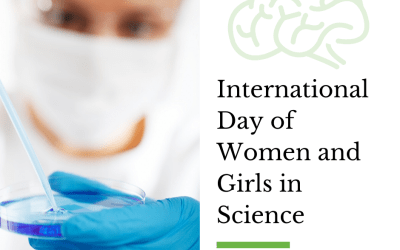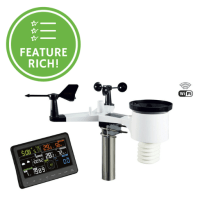International Day of Women and Girls in Science

The annual International Day of Women and Girls in Science recognises the critical role women and girls play in science-related fields while promoting the full and equal access of females to participate. As an equal opportunity employer, Instrument Choice celebrates the contribution women make. This article examines why commemorating this day matters and spotlights the extraordinary contributions Australian women have made within the discipline of science, technology, engineering, and mathematics (STEM).
While women have made tremendous progress globally towards increasing their participation in higher education, a significant gender gap remains at all levels of STEM.
Here are some fast facts that illustrate the current imbalance:

Why so few?
Long-standing biases, together with gender stereotypes, are steering girls and women away from science-related fields. The International Day of Women and Girls in Science is changing the narrative. In support of women and girls who are leading innovation and helping to remove gender barriers, Instrument Choice invites you to consider the outstanding achievements of some notable pioneering STEM females, along with profiles of contemporary Australian women in the STEM field who are kicking goals today.
Firsts for Australian Women in Science

Ruby Payne-Scott
In the 1940s, Ruby Payne-Scott was often the only female student in her field while studying at the University of Sydney. Undeterred, she went on to become a pioneer in radio astronomy and radiophysics and was the first female radio astronomer. Working at the CSIR (now CSIRO), she performed breakthrough work in radio interferometry for astronomical observations. She confirmed that intense radio 'bursts' originated from sunspots and is renowned for discovering Type I and Type III radio bursts. Her legacy also included gathering critical data that helped characterise Type II and Type IV radio bursts.

Professor Dorothy Hill
Dorothy Hill was an Australian geologist and paleontologist with an impressive 50-year career in the field. Among her array of awards, Dorothy was also the first female professor at an Australian university, and the first female president of the Australian Academy of Science.

Professor Elizabeth Blackburn
Elizabeth Blackburn is a molecular biologist and the first Australian female Nobel Laureate. She was awarded the Nobel Prize in Physiology or Medicine "for the discovery of how telomeres and the enzyme telomerase protect chromosomes."
Females in STEM making waves
Code Like A Girl – Vanessa Doake and Ally Watson

Established in Melbourne by Ally Watson and Vanessa Doake, “Code Like A Girl” aims to teach tech skills to young girls of all backgrounds. Their message is that it’s not enough to have more women using tech - instead, the world needs more women building it! They argue that the up-skilling of women will future-proof the workforce, will help address sexism, provide role models for girls and young women, and secure the long-term viability of businesses and organisations. Who could argue with that?

Dr. Dharmica Mistry
At only 22, Dharmica Mistry made a medical breakthrough discovery in breast cancer detection that led her to co-found an Australian biotechnology company.Her goal? To deliver an affordable, simple, accessible, and non-invasive blood test to detect breast cancer.

Dr. Abigail Allwood
Abigail Allwood is an Australian geologist and astrobiologist at the NASA Jet Propulsion Laboratory. She is the first female and first Australian principal investigator on a NASA Mars mission. Her impressive studies include investigations into stromatolites, the detection of life on other planets, and the evolution of life early in the history of the Earth.
The extraordinary women listed above are just a few of the who have and who continue to make their mark in STEM. Their innovations debunk the adage that ‘science is not for women.’ Instrument Choice hopes that you will join us in acclaiming the International Day of Women and Girls in Science. This day is a reminder that women play a critical role in science, technology, engineering, and mathematics while emphasizing how crucial it is to increase female participation in these fields.
Also interesting
With such a huge variety of home weather stations on the market, all with different features and capabilities, getting to know what each station offers can be a challenge. The great news is that your Instrument Choice team regularly reviews new and popular weather station models so you can make more informed choices!
Today we closely examine the IC0370 Wireless Weather Station, assessing the features of its outdoor multi-sensor station and indoor console. We also touch on the device’s WIFI connectivity and what it means for your local weather data collecting capabilities.

Instrument Choice Experiment: What is the Function of a Solar Radiation Shield on a Weather Station?
If you have a home weather station, you may be aware of a radiation shield covering the temperature and humidity sensors. In this experiment, the Instrument Choice scientists demonstrate the function of a passive solar radiation shield by collecting temperature data from a logger protected by a radiation shield and then comparing results to a logger that recorded temperature data when placed in direct sunlight.

